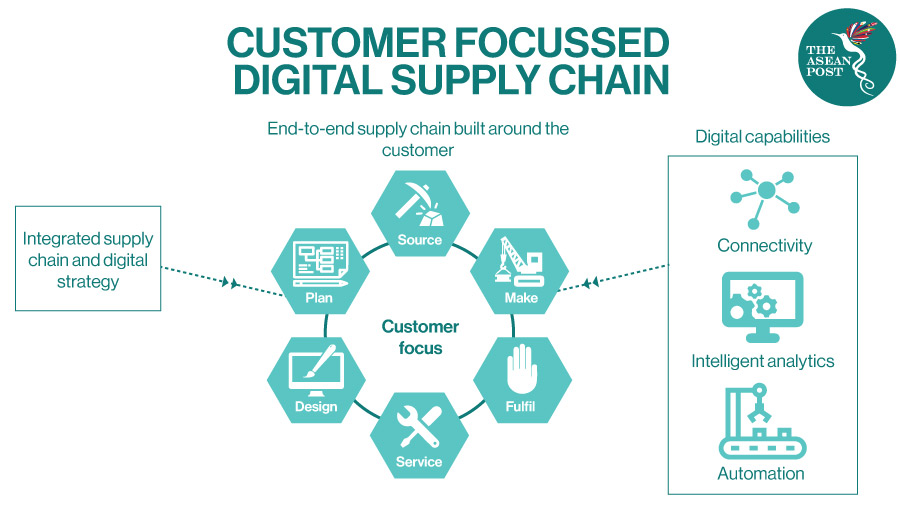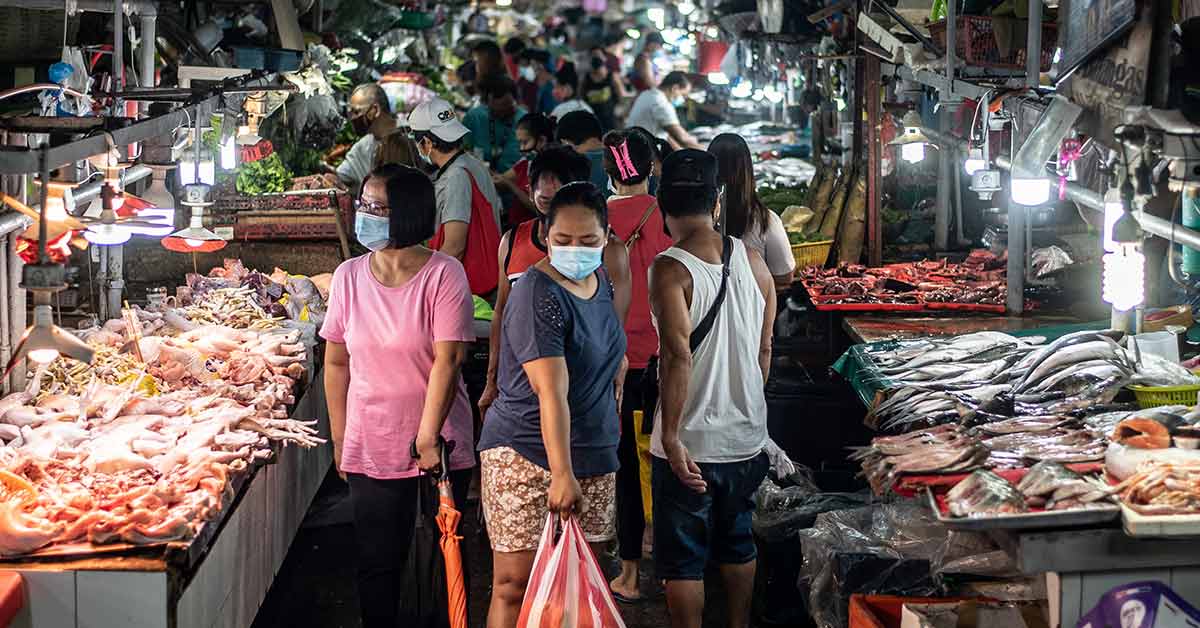The COVID-19 pandemic which is expected to be prolonged and drawn out at least until a vaccine is readily available, has rekindled the call for ASEAN, a market of nearly 700 million people and growing middle class, to further forge and foster regional integration.
At the same time, the COVID-19 pandemic has also been a catalyst and impetus in exposing the critical need for business and commerce to further digitalise and explore usage of new technologies.
The one geo-economic factor that will blend these two together – regional integration and digitalisation – is supply chain reconfiguration (SCR).
SCR can simply be defined as the rearrangement of supply chain structures to reflect current exigencies such as disruptions and shocks. When the supply chain adapts and adopts digitalisation and new technologies, connectivity will not only resume but become more resilient.
This is nowhere better illustrated than in the increasing substitution of physically integrated supply chain processes by physically fragmented ones as highlighted by Jamari Mohtar at independent think-tank, EMIR Research, in his article, “Tackling MCO's economic paradox and its aftermath.”
SCR, therefore, will be a pivotal driver in the momentum towards closer and deeper regionalisation amidst the expected-to-be prolonged COVID-19 crisis.
Towards that end, even as SCR is tapped to promote ever-closer regionalisation, it’s also dependent on the role played by ASEAN member states in enhancing and boosting connectivity and supply chains.
In calling for regionalisation, member states could set up a common supply chain fund, perhaps in the form of an ASEAN “Business Infrastructure Bank”. Funds would be pooled from member-states that will be proportionately reflected in the shares held as well as financing support from the Asian Development Bank (ADB) and even the Asian Infrastructure Investment Bank (AIIB).
The fund or bank will provide financing to both governments and the private sector to develop and promote SCR and enhanced trade connectivity in the region and beyond. This includes digital adaptation and adoption as means to promote digital convergence and supply chain confluence as exemplified, for example, by e-commerce.

There is also the need for a common protocol that will obviate problems arising from supply chain disruptions, a point made by Hanim Hamzah, Senior Fellow of the CIMB ASEAN Research Institute (CARI). This common protocol should encompass all aspects in supply chain management (SCM) – legal, technical, digital and financial. By the same token, it should also reflect SCR and its building-blocks for future developments.
For example, the common protocol should make use of distributed ledger technology or otherwise popularly known as blockchain to enhance regional participation in the supply chain and thereby boost regional integration.
A 2017 McKinsey report titled, “Blockchain technology for supply chains – A must or a maybe?” outlines three benefits to be had from a SCR that’s operationalised via blockchain, namely:
1. Replacing slow, manual processes
2. Strengthening traceability; and
3. Reducing supply-chain IT transaction costs
As such, SCR will allow ASEAN member states to enjoy efficiency gains as well as reduced costs over time with blockchain playing a role as part of the digital economies of scale.
In turn, this will contribute towards greater regionalisation as ASEAN member states are placed on a more level playing field, so to speak, in terms of digital adoption and adaptation leading to enhanced supply chain connectivity.
New Technologies
Following on from digitalisation, SCR can also take the shape of new technologies that introduce the logistics of the future – looking forward and ahead.
For example, an integrated and multi-modal network of distribution channels revolving around underground tunnel technology as the centrepiece in the supply chain system and operationalised by digitalisation could partly lead the way in SCR.
Underground or subterranean tunnels, including undersea tunnels, would allow for seamless and uninterrupted supply chain activities – that are also resilient against outbreaks or pandemic such as the COVID-19 pandemic where imposition of partial lockdowns and movement restrictions also affect production and distribution.
The mushrooming of e-commerce as a result of the impact of the COVID-19 outbreak will lead to greater usage and competition for urban traffic space within domestic borders as shown in studies on urban logistics systems.
And uncertainties over the “expiry date” of COVID-19 coupled with whether the pandemic can be totally controlled in the form of the imminence of a “second” or “third” wave cutting across borders makes the case for a new logistics all the more compelling.
Although construction of subterranean supply chain networks will take some time and could even outlast the remaining duration of the COVID-19 outbreak, nonetheless, SCR in this form will provide a lasting contribution towards regional integration.
The underground tunnels can also serve to enhance internet and digital connectivity within the ASEAN region, thus further boosting SCR in a reciprocal relationship.
Deploying technologies such as near-synchronous magnetic motors which is similar to the technology used in roller coasters, underground tunnels would also speed up the supply chain process and thus by extension, facilitate and promote regional integration in terms of linking production networks and bases as part of wider supply chain processes.
This can be seen in Just-in-Time (JIT) inventory management systems whereby delivery of the needed raw and semi-processed materials take place according to the scheduled demands of the user, so overstock and waste is eliminated.
Digitalisation – Internet of Things (IoT), Big Data, precision analytics, business algorithms and artificial intelligence (AI) and not least 5G wireless technology – plays a crucial role in the processing and coordination of operations and orders in a timely, targeted and expeditious manner.
This means that SCR in terms of new logistics can be leveraged by ASEAN member states to promote both, horizontal and vertical integration across borders even as the latter could be instrumental in driving the dynamism of the former.
In the final analysis, SCR is not just about reshoring and onshoring the flow and movement of trade and investment. More than that, it involves also the reconceptualising and re-adapting of physical assets and infrastructure of the supply chain to strengthen intra-regional connectivity.
This would then yield spill-overs and serve as building-blocks for future logistics which in turn will further deepen regional integration.
Related Articles:

